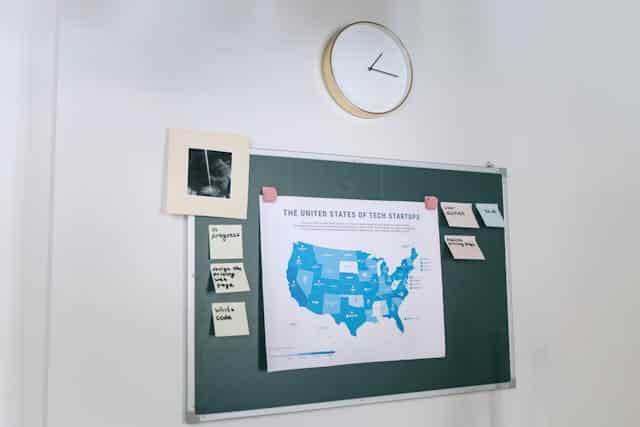Modern businesses rely heavily on data systems. Product mapping plays a big role in managing digital assets. But as technology grows, so do legal concerns. One of the key challenges is product mapping task patent infringement.
In this article, we explain what product mapping means, why patents matter, and how infringement happens. We also look at how businesses can protect themselves from legal risks.
What is Product Mapping?
Product mapping is a digital task used in e-commerce, logistics, and inventory systems. It involves matching or linking products across different databases or platforms.
For example, a store may sell shoes from multiple brands. Each brand uses its own naming system. Product mapping helps create a uniform structure so users can easily compare and search for items.
This task is often handled using software tools. These tools use data points like size, color, category, and pricing. The goal is to avoid errors, improve customer experience, and support smooth transactions.
Understanding Patent Infringement
A patent is a legal right given to an inventor. It protects their invention from being copied or used without permission. When someone uses a patented method or system without a license, it’s called patent infringement.
In the world of product mapping, companies often develop unique algorithms or workflows. If these are patented, using similar systems without approval can lead to legal action.
Infringement may be intentional or accidental. Either way, it can result in costly lawsuits or business shutdowns.
How Patent Infringement Happens in Product Mapping
Product mapping tools often use custom-designed processes. These may involve:
- Matching logic
- Data transformation steps
- Auto-classification features
- AI-based recommendations
If a company builds a similar system without checking existing patents, they may unknowingly violate someone else’s rights.
Patent infringement can occur when:
- A business copies a patented workflow
- Software is reverse-engineered
- A third-party plugin uses protected code
- Licensing terms are ignored
Even if your system was developed independently, it may still overlap with a patented idea.
Real-World Example
A well-known legal case involved a tech firm that developed a product comparison engine. Another company claimed that this engine copied its patented method for mapping data fields. The case ended with a settlement and restrictions on the use of that tool.
This example shows how small companies can face big problems if they don’t check for existing patents.
Detecting Infringement Risks
Before launching a product mapping system, it’s important to check for existing patents. This can be done through:
- Patent database searches
- Legal consultation with IP lawyers
- Licensing checks for third-party software
Failing to do this may expose your business to legal complaints. It’s better to invest in legal review before the launch rather than face lawsuits later.
Impact of Infringement on Businesses
Patent infringement has serious consequences. These include:
- Legal fees and court costs
- Product bans or forced changes
- Reputation damage
- Revenue loss
A company may also be asked to pay royalties or penalties. In some cases, business owners may have to shut down operations or withdraw products from the market.
How to Avoid Infringement
Avoiding product mapping task patent infringement requires planning and caution.
Here’s what businesses can do:
- Work with legal professionals during development.
- Use original algorithms and avoid copying from competitors.
- Document your own development process to prove originality.
- Always read license agreements for third-party tools.
- Stay updated on new patents in your industry.
These steps reduce risk and build a strong foundation for growth.
Importance of Innovation
One way to avoid legal trouble is to be truly innovative. Create your own method, test it, and make it better than existing options. Innovation helps you stand apart and build your own patent rights.
When a product mapping tool is unique, it becomes a valuable asset. It can even be licensed to other businesses, generating revenue.
Innovation also shows responsibility. It proves your company respects intellectual property and values creativity.
Role of Open-Source Software
Open-source tools are often used for product mapping tasks. While they’re useful, they come with conditions.
Most open-source licenses allow free use. However, some require:
- Attribution to the original creator
- Sharing your modifications
- Restricting commercial use
Ignoring these terms can lead to copyright or patent issues. Always verify the license type and follow the rules.
Even if the tool is free, it doesn’t mean it’s free from responsibility.
What If You’re Accused?
If you receive a notice about patent infringement, don’t panic. First, read the document carefully. Then, take the following steps:
- Contact a qualified patent lawyer.
- Stop using the suspected method if advised.
- Review how your system was built.
- Check if the patent claim is valid.
- Consider a license deal or settlement if needed.
Quick action can reduce damage and show that you’re acting in good faith.
The Role of Patent Lawyers
Patent attorneys are experts in intellectual property law. They can help businesses in several ways:
- Searching for existing patents
- Filing your own patents
- Defending against claims
- Reviewing third-party software risks
Their knowledge protects your company from costly mistakes.
Even if your budget is tight, a one-time legal consultation can save you big in the long run.
Future of Product Mapping Technology
Product mapping is evolving fast. AI and machine learning are now used to automate this task. This improves accuracy and speed but also increases patent risks.
As more companies enter this field, the number of patents will grow. Staying informed and protected becomes even more important.
If your company plans to innovate in this area, consider filing your own patents. This adds value and shields your work from copycats.
Tips for New Developers
If you’re a new developer working on product mapping tools, remember these tips:
- Never copy code or features from unknown sources.
- Understand the basics of IP law.
- Work with others who respect originality.
- Always give credit when using someone else’s work.
Building from scratch may take more time but gives you peace of mind.
Conclusion
product mapping task patent infringement is a real and growing concern. In a digital world filled with software and data tools, protecting ideas has become a necessity.
If you’re building or using product mapping systems, take the time to understand patents. Respect the rights of others. Create your own innovations. And most importantly, seek legal help when needed.
A little care today can prevent a lot of trouble tomorrow. Stay smart, stay safe, and stay original.
Frequently Asked Questions
What is patent infringement in product mapping?
It’s when someone uses a patented system or method for mapping products without legal permission.
How can I check if a patent exists for a tool I want to build?
You can search online databases or consult with a patent lawyer for detailed research.
Can open-source tools cause patent issues?
Yes, if their license terms are not followed or if they include patented elements.
What should I do if I receive an infringement notice?
Contact a legal expert, pause the use, and assess your system with their help.
Is it possible to patent my own product mapping tool?
Yes, if your tool is unique and meets patent criteria, you can file for protection.







